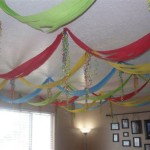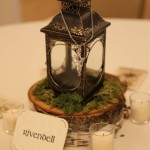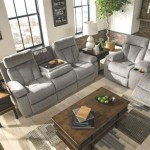Living Room Decorating Ideas With Dark Wood Floors
Dark wood floors offer a rich and sophisticated foundation for a living room. They provide a sense of grounding and timeless elegance. However, designing a space around dark wood flooring requires careful consideration of color palettes, furniture choices, and lighting to prevent the room from feeling too dark or heavy. This article explores various decorating strategies to maximize the potential of living rooms featuring dark wood floors, focusing on creating a balanced and inviting atmosphere.
Balancing Light and Dark: Color Palette Considerations
The key to successfully decorating a living room with dark wood floors is to balance the inherent darkness with lighter elements. The walls are a primary surface to introduce brightness and contrast. Opting for light and neutral wall colors like off-white, cream, light gray, or even pastel shades, can significantly brighten the space and prevent it from feeling enclosed. These lighter shades reflect natural light, making the room feel more open and airy.
While neutral walls are a safe and effective choice, incorporating accent colors can add personality and visual interest. Consider using bolder colors like deep teal, emerald green, or even a vibrant mustard yellow as accent colors in artwork, throw pillows, or decorative accessories. The key is to use these bolder colors sparingly, ensuring they complement rather than compete with the dark wood flooring.
Avoid using very dark or saturated colors on the walls, as this can make the room feel smaller and more oppressive. If a darker wall color is desired, consider using it on a single accent wall to create a focal point without overwhelming the space. Ensure that the accent wall receives ample natural or artificial light to prevent it from appearing too dark.
Another successful strategy is to introduce lighter-colored rugs. A large, light-colored area rug can visually break up the expanse of dark flooring and create a focal point in the room. Consider rugs with geometric patterns, abstract designs, or even solid colors like ivory, beige, or light gray. The rug should be large enough to anchor the main seating area, ideally with the front legs of the furniture resting on the rug.
Furniture Choices: Style and Material
The furniture choices play a crucial role in the overall aesthetic of a living room with dark wood floors. Lighter-colored furniture can create a striking contrast against the dark flooring, while darker pieces can blend seamlessly but may require careful balancing with lighter accessories.
Upholstered furniture in light neutral tones such as cream, beige, or light gray is a popular choice. These colors create a sophisticated and elegant look while providing a visual contrast to the dark floors. Consider fabrics like linen, cotton, or velvet for a luxurious feel. Adding texture through the upholstery can also enhance the visual appeal.
If opting for darker furniture, it is essential to break up the monotony with lighter-colored throw pillows, blankets, and other accessories. Consider using furniture with light-colored frames or legs to create a visual lift. For example, a dark brown sofa with light wooden legs can appear less heavy than one with dark wooden legs.
Material choices are also important. Furniture crafted from lighter woods, such as birch or maple, can provide a natural contrast to the dark flooring. Consider incorporating metal accents, such as brass or chrome, in furniture legs, coffee tables, or side tables to add a touch of sophistication and reflect light around the room. Glass coffee tables are another excellent option as they allow the dark flooring to remain visible and contribute to a sense of spaciousness.
Avoid using furniture with overly ornate details or heavy silhouettes, as this can make the room feel cluttered and overwhelming. Opt for clean lines and simple designs that complement the contemporary or traditional style of the space.
Maximizing Light: Natural and Artificial
Adequate lighting is essential for creating a welcoming and functional living room, especially when working with dark wood floors. Maximizing both natural and artificial light sources is crucial to prevent the room from feeling dark and gloomy.
Natural light is the most desirable form of illumination. Ensure that windows are not blocked by heavy curtains or furniture. Consider using sheer curtains or blinds that allow light to filter through while maintaining privacy. Mirrors can also be strategically placed to reflect natural light and make the room feel brighter and more spacious.
Artificial lighting should be layered to provide both ambient and task lighting. Ambient lighting provides overall illumination and can be achieved with chandeliers, pendant lights, or recessed lighting. Task lighting is designed for specific activities, such as reading or working, and can be provided by floor lamps, table lamps, or sconces.
Consider using lamps with light-colored shades to maximize the amount of light emitted. Position lamps strategically to illuminate dark corners and create a warm and inviting atmosphere. Dimmable light fixtures are also a valuable addition, as they allow one to adjust the brightness level to suit different activities and moods.
Warm-toned light bulbs are generally preferable for living rooms, as they create a cozy and inviting ambiance. Avoid using harsh, cool-toned light bulbs, as they can make the room feel sterile and unwelcoming. LED bulbs are a good option as they are energy-efficient and available in a variety of color temperatures.
Under-cabinet lighting can be incorporated into built-in shelving or entertainment centers to add another layer of illumination and highlight decorative objects. This type of lighting can also create a dramatic effect and add visual interest to the room.
Adding Texture and Visual Interest
Introducing texture and visual interest is key to creating a well-designed living room with dark wood floors. Texture can be added through a variety of materials, patterns, and finishes.
Throw pillows and blankets are an easy and affordable way to introduce texture and color into the space. Consider using pillows in a variety of fabrics, such as velvet, linen, and faux fur, to create a layered and inviting look. Blankets in contrasting colors and textures can be draped over sofas and chairs to add warmth and visual appeal.
Wall decor is another opportunity to add texture and visual interest. Consider hanging artwork with textured surfaces, such as canvas paintings or framed prints with interesting matting. Wall tapestries can also add a soft and tactile element to the room.
Rugs are an excellent way to introduce both color and texture. Consider using rugs with high piles or intricate patterns to create a focal point and add visual interest. Natural fiber rugs, such as jute or sisal, can also add a rustic and textured element to the space.
Accessories, such as vases, bowls, and sculptures, can also be used to add texture and visual interest. Consider using accessories in a variety of materials, such as ceramic, glass, metal, and wood, to create a layered and eclectic look. Grouping accessories together in clusters can create a more impactful display.
Plants are a natural and organic way to add texture and visual interest to the living room. Consider using a variety of plants with different shapes, sizes, and textures to create a lush and inviting atmosphere. Plants can also help to purify the air and improve the overall health of the space.
Incorporating Metallic Accents
Metallic accents can add a touch of glamour and sophistication to a living room with dark wood floors. Metals reflect light, which can help to brighten the space and create a sense of spaciousness. Choosing the right metal tone can also enhance the overall style of the room.
Gold and brass accents can add warmth and luxury to the space. Consider using gold or brass hardware on furniture, such as drawer pulls and cabinet knobs. Gold or brass picture frames and mirrors can also add a touch of elegance to the walls. These metals work well with both warm and cool color palettes.
Silver and chrome accents can add a contemporary and sleek feel to the living room. Consider using silver or chrome lighting fixtures, such as floor lamps and table lamps. Silver or chrome accessories, such as vases and bowls, can also add a touch of sophistication. These metals are particularly effective with cool color palettes.
Copper accents can add a rustic and industrial feel to the space. Consider using copper lighting fixtures, such as pendant lights and sconces. Copper accessories, such as trays and planters, can also add a touch of warmth and character. Copper pairs well with both warm and neutral color palettes.
Mixing different metal tones can create a more eclectic and layered look. However, it is important to do so in a balanced and thoughtful way. Consider choosing one dominant metal tone and using other metal tones as accents. It is also important to consider the overall style of the room when choosing metal accents.
Maintaining Balance and Avoiding Over-Darkening
The ultimate goal when decorating a living room with dark wood floors is to create a balanced and inviting space. This requires careful consideration of all the elements discussed above, ensuring that the dark flooring is complemented by lighter and brighter elements to prevent the room from feeling too dark or heavy.
Regularly assess the lighting conditions in the room throughout the day. Adjust window treatments and artificial lighting as needed to ensure that the room remains well-lit. Also, consider adding more reflective surfaces, such as mirrors or glass furniture, to bounce light around the space.
Avoid using too many dark-colored accessories or furniture pieces. If a dark-colored sofa is chosen, balance it with light-colored throw pillows, blankets, and a light-colored area rug. If dark artwork is desired, ensure that it is well-lit and surrounded by lighter wall colors or accessories.
Decluttering is essential for maintaining a light and airy feel in the room. Avoid overcrowding the space with too much furniture or accessories. Keep surfaces clear and organized to prevent the room from feeling cluttered and overwhelming.
By carefully considering color palettes, furniture choices, lighting, texture, and metallic accents, it is possible to create a beautiful and inviting living room with dark wood floors that is both stylish and functional. The key is to balance the inherent darkness of the flooring with lighter and brighter elements to create a space that is comfortable, welcoming, and visually appealing.

35 Gorgeous Ideas Of Dark Wood Floors That Look Amazing Floor Living Room Furniture Arrangement

What Furniture Goes With Dark Wood Floors Calgary

Room Ideas With Dark Wood Floors Google Search Living Floor Design

40 Dark Hardwood Floors That Bring Life To All Kinds Of Rooms

Dark Hardwood Flooring In Interior Design Pros And Cons Floor Living Room Floors Wood

Living Room Dark Hardwood Floors Design Photos And Ideas Dwell

Living Room Dark Hardwood Floors Design Photos And Ideas Dwell

Living Room Decor Ideas Dark Wood Flooring White Walls Black Furniture Floors Floor

40 Dark Hardwood Floors That Bring Life To All Kinds Of Rooms

Decorating Rooms With Dark Floors And Gray Walls The Flooring Girl
Related Posts







